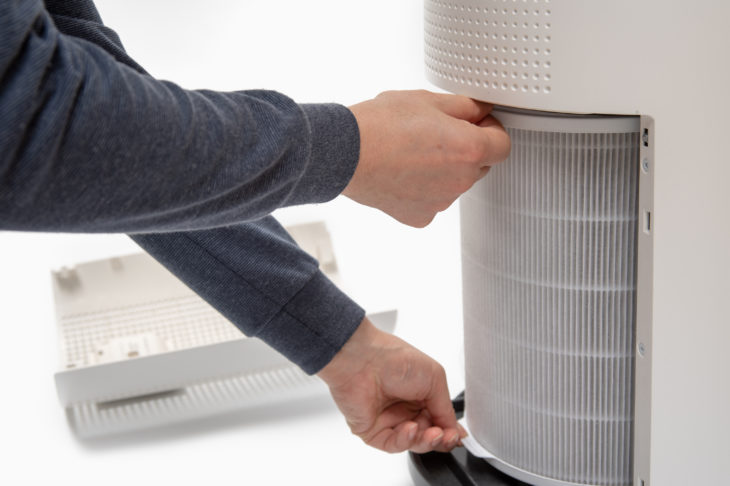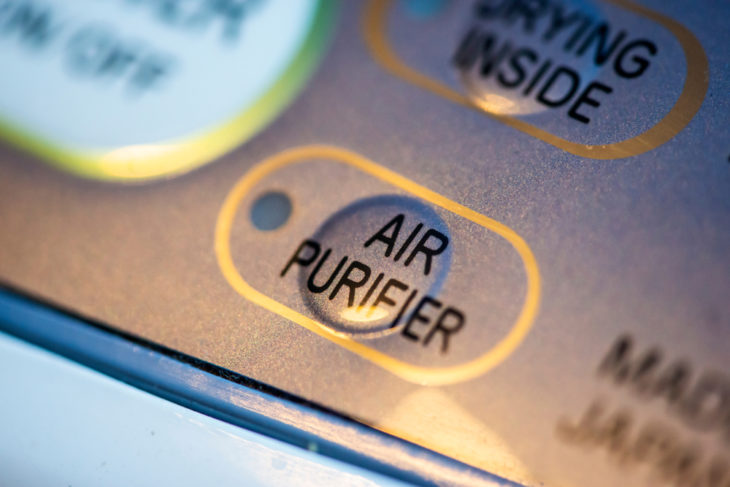Studies have shown that indoor air is about 5 times more polluted than it is outside. As such, it is as important as ever to get rid of any pollutants like dust, smoke, fumes, and more which might pose a danger to your health and the health of your loved ones.
One appliance that might greatly help with this is an air purifier as it is specifically designed to remove all the impurities in your home while supplying your living space with clean, fresh oxygen in return. If you are interested in learning more about these devices, here are some things to have in mind.
How They Work
For cleansing, the device utilizes a singular or multiple filters and a fan. As soon as it is turned on, the impure air is pulled into the purifier via the fan where it passes through the filter or filters. They capture any pollutants, harmful particles, and substances, after which the clean air is released back into the room.

Source: A Fresher Home
Filters
There are several types of filters you can use, so choose one that best fits your needs. Keep in mind that the more filters your appliance has, the more pollutants will be captured in the process. Some common types include:
Air Cleaners (Primary Filters) – They are usually made from paper, mesh, or fiberglass and are mostly used to capture certain particles. Their density determines what sizes of pollutants will stick onto the filter, meaning the denser it is, the better. Reusable filters are especially great for capturing pollen and dust mites. You can visit https://homeairadvisor.com/best-air-purifiers-with-permanent-washable-filter/ for more information.
High-Efficiency Particulate Air – Referred to as HEPA for short, these filters are typically made from fiberglass and are the most efficient types. They have the ability to capture particles that are 0.3 micrometers or larger. However, they do not remove odors, fumes, or smoke, so you might need to look for some additional features that can do this.

Source: Wolseley PRO Pipeline Blog – Wolseley Express
Additional Filter Features
Ionizer – The system creates ions – charged molecules that change the charge of particles in the air, turning them from neutral into negative or positive. Once this happens, the particles with the opposite charge will be attracted to one another and will begin to clump. They will then be collected by two metal plates within the appliance one of which is charged negatively and the other positively. They remove even the smallest particles that can be 0.01 micrometers in size.
UV Light – Ultraviolet light is perfect for getting rid of microbes, airborne bacteria, and viruses, eliminating any potential harm these micro-organisms can cause.
Absorbents – Using absorbent materials such as activated charcoal enables the appliance to capture chemicals and fumes by trapping the substances onto the activated charcoal’s surface.

Source: Arquitectura, Construção e Imobiliário
The Benefits
Besides supplying your home with constant fresh and clean air, these devices are also great for people who suffer from asthma, allergies, or have other breathing problems. They will get rid of nasty odors, harmful fumes or chemicals, and will keep you healthier since certain types have the ability to render numerous micro-organisms sterile and harmless.
Conclusion
These appliances provide a healthier living environment for your family and ensure better air quality throughout your living space. Just remember to choose a type that suits your needs and enjoy the many benefits it has to offer.
